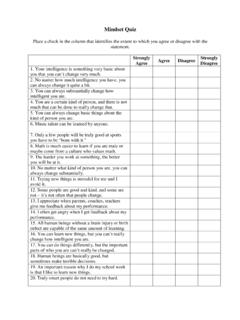Transcription of Pet Expertise Dog Training Guide
1 1 Pet Expertise Dog Training Guide : Basic Manners for the Family Dog By Professional Dog Trainer, Jess Rollins Copyright 2007 Do Not Duplicate This Content We grant permission to link to the Training Guide or tell your friends to download it at: Legal Disclaimer: Pet Expertise /Jess Rollins is in no way responsible for the behavior of your pet at any time, not now or in the future. Animals may, without warning, cause injury to humans and/or other animals. Pet Expertise /Jess Rollins, is not responsible for attacks, bites, mauling, or other damages.
2 We recommend that you exercise caution for the safety of myself, the animal, those around me and those animals around me while working with your dog. 2 Table of Contents Part I Teaching the Humans ..3 General Care, Suggested Goals ..3 Socializing Your Puppy ..5 Strategies to Deal with Problem Behaviors ..6 Why use Rewards and not Punishments Such as Collar Corrections to Train Your Dog? ..7 Training Tips ..8 Frequently Asked Questions About Clicker Training ..9 The Science of Part 2: Teaching the Dog ..11 Name Response.
3 11 Come ..12 Drop It ..14 Leave It ..15 Sit ..16 Accepting Handling ..18 Leash Manners ..20 Lie Down ..23 Stay ..24 Go ..25 Settle ..26 Part 3: Problem Solving ..26 Nipping ..26 Jumping Up ..27 Housetraining ..28 Barking ..31 The End (But you re Never Done Teaching Your Dog!) ..33 3 Part I: Teaching the Humans General Care, Suggested Goals Check the appropriate boxes when you have achieved the goal: Diet High Quality Food avoid corn, wheat, by products, artificial preservatives and artificial colors.
4 Fresh Healthy Supplements added (1/4 of daily ration) such as yogurt, fresh meat and vegetables. Avoid junk food Grooming and Handling Check List Dog is comfortable being touched on feet, ears, tail and this is practiced daily Dog is comfortable with brushing/combing Dog is brushed frequently enough to prevent matting of the coat and the skin healthy (once per day twice per week) Dog is comfortable with ear cleaning Ear cleaning is done once per week Dog is comfortable with tooth brushing Tooth brushing is done once per week Dog is comfortable with bathing Bathing is done once per month Exercise and Play Dog has many toys including a Nylabone, and Kong Dog is addicted to at least one toy Dog gets at least 30 minutes of exercise with a person per day Dog gets at least 10 minutes of Training per day 4 For proper Socialization, make sure your dog is.
5 Dog is comfortable with male and female adults Dog is comfortable with male and female children Dog is comfortable with people in special circumstances (wheelchair, crutches, etc.) To prevent possessiveness, ensure the following: Dog is comfortable with his food bowl, toys or bed being touched Dog is comfortable with sharing his best friend For pleasant car rides Dog is comfortable riding in the car Dog is Properly restrained in car Miscellaneous At least 10 hrs good sleep in an adults bedroom. Visits vet regularly, has rabies and distemper vaccination.
6 Neutered or spayed. Proper weight you should be able to feel your dog's ribs but they should not stick out. Not left outside for long hours. Less than 1 housetraining accident per week. Excess vaccinations or parasite treatments avoided. 5 Socializing Your Dog or Puppy Ongoing socialization is extremely important to prevent behavior problems. Socialization is especially important before the age of 6 months, but should also throughout your dog s lifetime. Gentle socialization plays a huge role in preventing aggression and fearful behavior.
7 Lack of socialization can lead to hyperactive behavior, barking, shyness and aggression. The younger you begin socializing your dog, the better, but all dogs can be gradually brought into new and even initially fearful situations and learn to enjoy them. Socialization is a lifelong process. For example, if your dog does not see any dogs for months or years at a time, you would expect his behavior to change around them when he does finally see them again. How to expose your dog to something new or something he is wary of: Make sure that you remain calm and up-beat and keep his leash loose, if he is wearing one.
8 Expose him gradually to what he is fearful of, never forcing him. Allow him to retreat if he wants too. Reward him for being calm or for exploring the new situation. Try to expose your dog regularly to all of the things and situations you would like him to be able to cope with calmly in the future. Progress slowly enough so that it is easy for your dog to enjoy the sessions. It will seem like a lot of time to spend at first, but it will pay off with a well-behaved dog! Below are some examples, but is not an exhaustive list: Meeting new people of all types, including children, men, crowds, people wearing hats, disabled, etc.
9 Meeting new dogs (due to disease risk, do not bring your pup to areas with lots of dogs until after 4 months unless it s a well-run puppy kindergarten). Positive Training classes are great for this. Exposure to other pets such as cats, horses, birds Teach him to enjoy his crate Riding in the car (be sure to restrain him using a secured crate or dog seatbelt for safety). Being held, touched all over and in different ways, being bathed and groomed. Visiting the veterinarian s office, groomer, daycare, boarding kennel. Exposure to loud noises and strange objects (ex.)
10 Umbrella opening). Exposure to traffic, motorcycles, bicycles, skateboards, joggers. Getting him used to being left alone for a few hours at a time. 6 Strategies to Deal with Problem Behaviors (more specific problem solving help is at the end of the book). Prevention: Socialization and the creation of a proper living environment are key factors to avoiding problems. Try to imagine all of the elements of his life with humans that he will need to accept to be comfortable with us such as being bathed, walking on streets, vacuum cleaners, etc.

